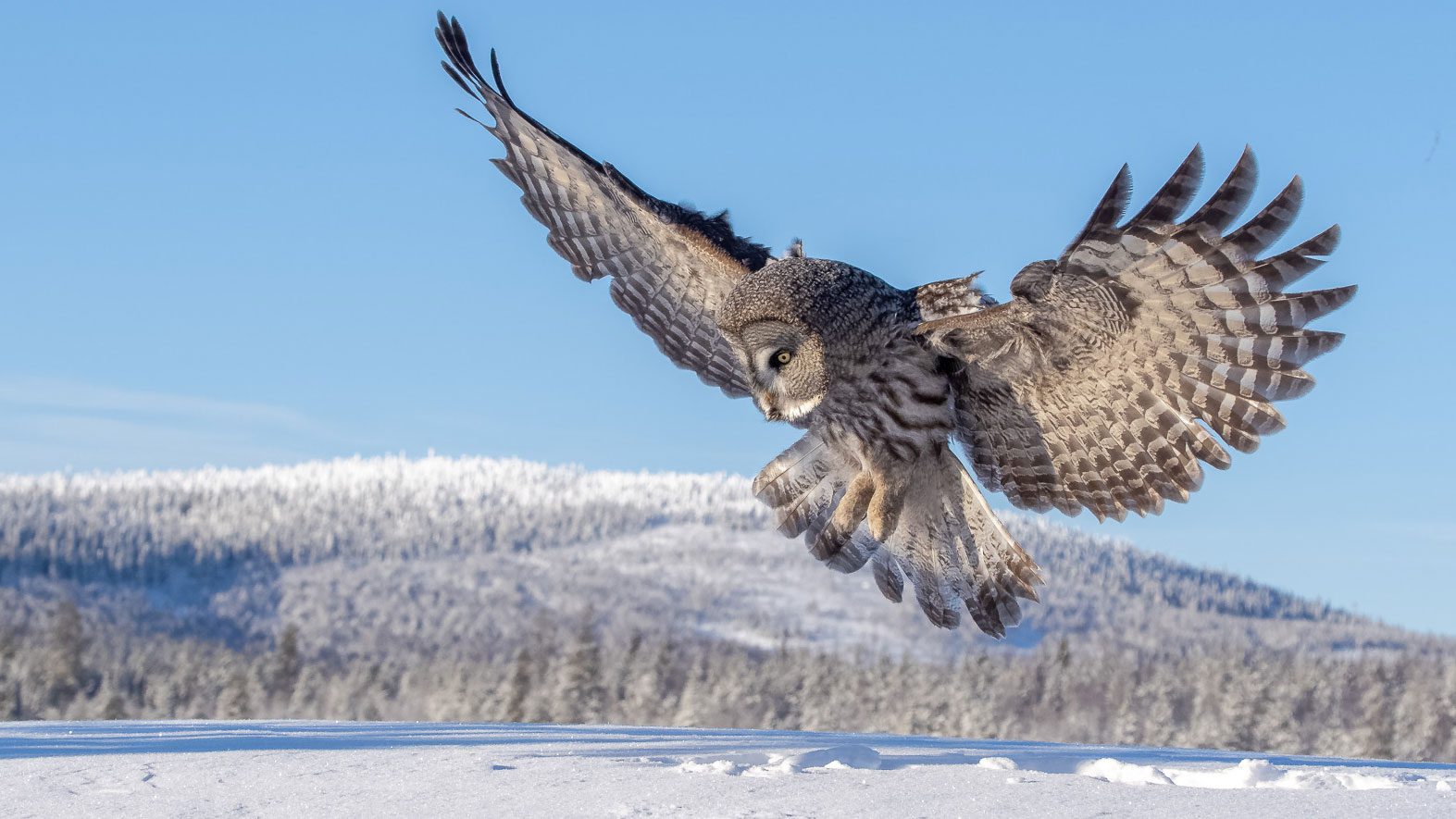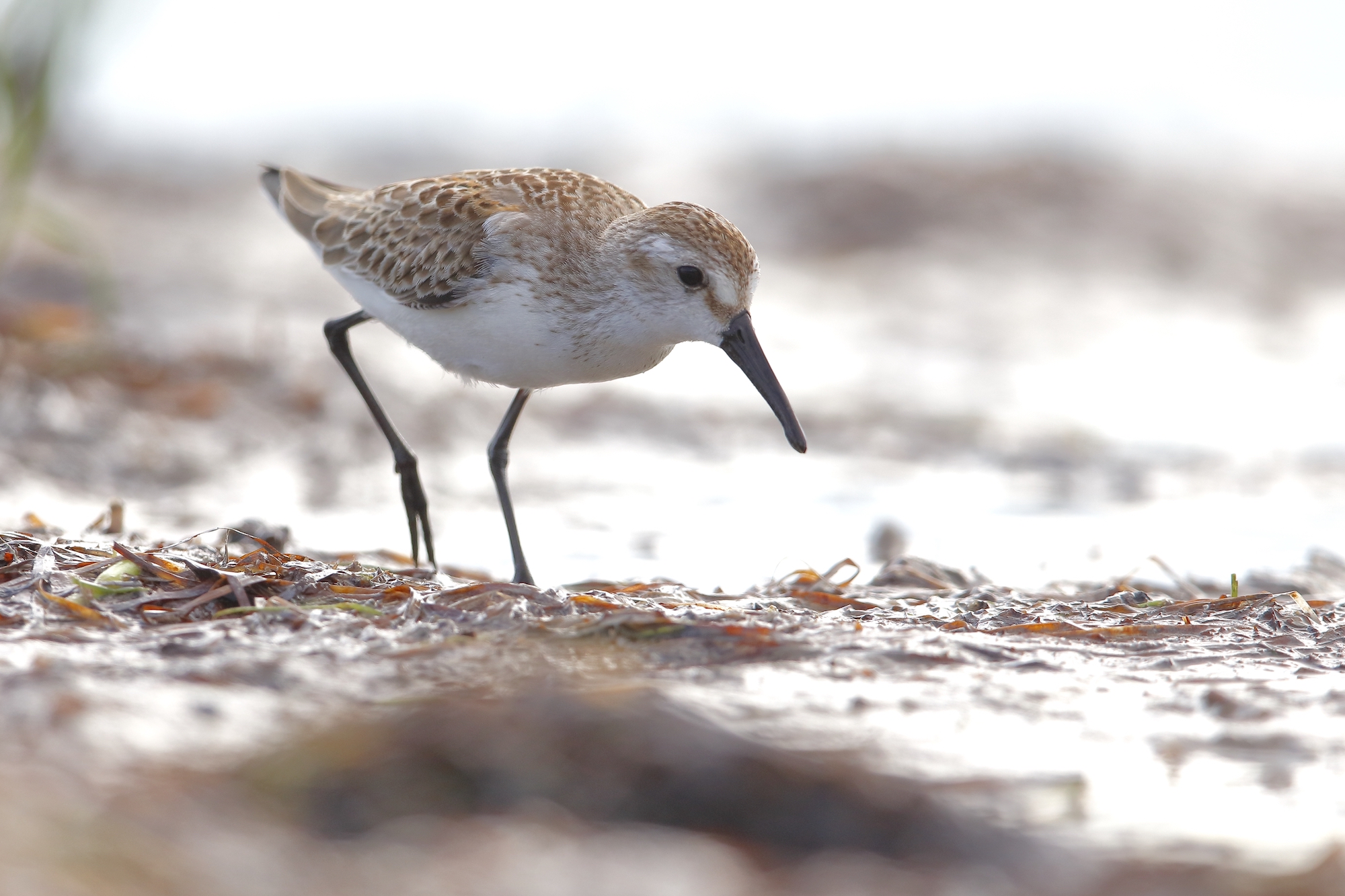New research into the weird ways snow distorts sound offers new hints about the extraordinary hunting strategies of a winter phantom—the Great Gray Owl.
From the Winter 2024 issue of Living Bird magazine. Subscribe now.
Perhaps no species of owl is as superbly adapted for hunting in snow as the Great Gray.
Found throughout the boreal forests of the Northern Hemisphere, Great Gray Owls dine primarily on small mouselike rodents called voles. In winter, voles retreat to tunnels deep under the snow—but that doesn’t stop Great Grays. Hunting from an exposed perch, an owl listens intently for its target, then swoops down from above, punching through the crust of snow with its long, powerful legs. Able to reach prey almost 18 inches below the surface of the snow, Great Gray Owls have been known to penetrate snow crusts thick enough to support a 175-pound person.
What hasn’t been clear, despite decades of research about Great Gray Owls, is how they do it—how do Great Grays hunt prey animals no longer than a ballpoint pen, which they can’t see, using only faint burrowing sounds more than a foot under the snow to guide them in plunging strikes with surgical precision?
Some intriguing new hints arrived recently via quirky research conducted by an unlikely pair of scientists. One, a California biologist who had spent most of his career studying the sounds made by hummingbird feathers, had long dreamed of working with owls; the other, a Canadian expert on owl field biology, had always wanted to study sound.
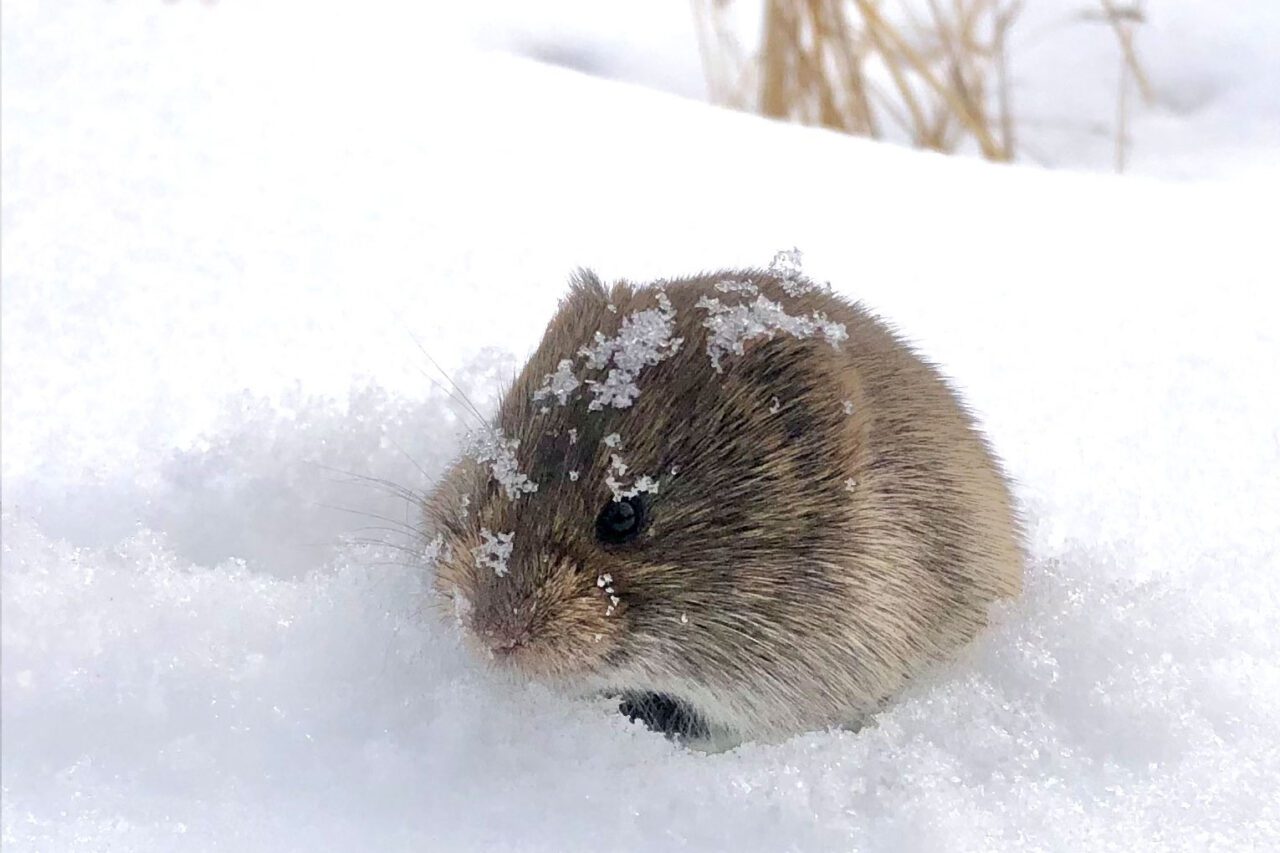
In their study, the researchers explored how Great Gray Owls use a set of finely tuned adaptations for gathering sound and localizing its source in deep snow. The Great Gray Owl’s facial disc, a bowl-shaped circle of feathers that frames its face, is the largest of any owl species, collecting and directing even the softest sounds from the environment toward its ears. And like other owls that hunt by sound, its ears, hidden under feathers, are asymmetrical. A higher ear opening on one side than the other enhances its ability to pinpoint a sound’s precise location.
To test the hunting-by-hearing capabilities of Great Grays, the researchers used an array of microphones buried under the snow to carry out a complex and unique set of experiments in the cold of Manitoba. Their research, published in the journal Proceedings of the Royal Society B in November 2022, uncovered new hints about the weird ways snow muffles and distorts sound—and the Great Gray Owl’s incredible ability to hear a vole hidden in the snow, which it turns out depends largely on the owl’s unique feathers.
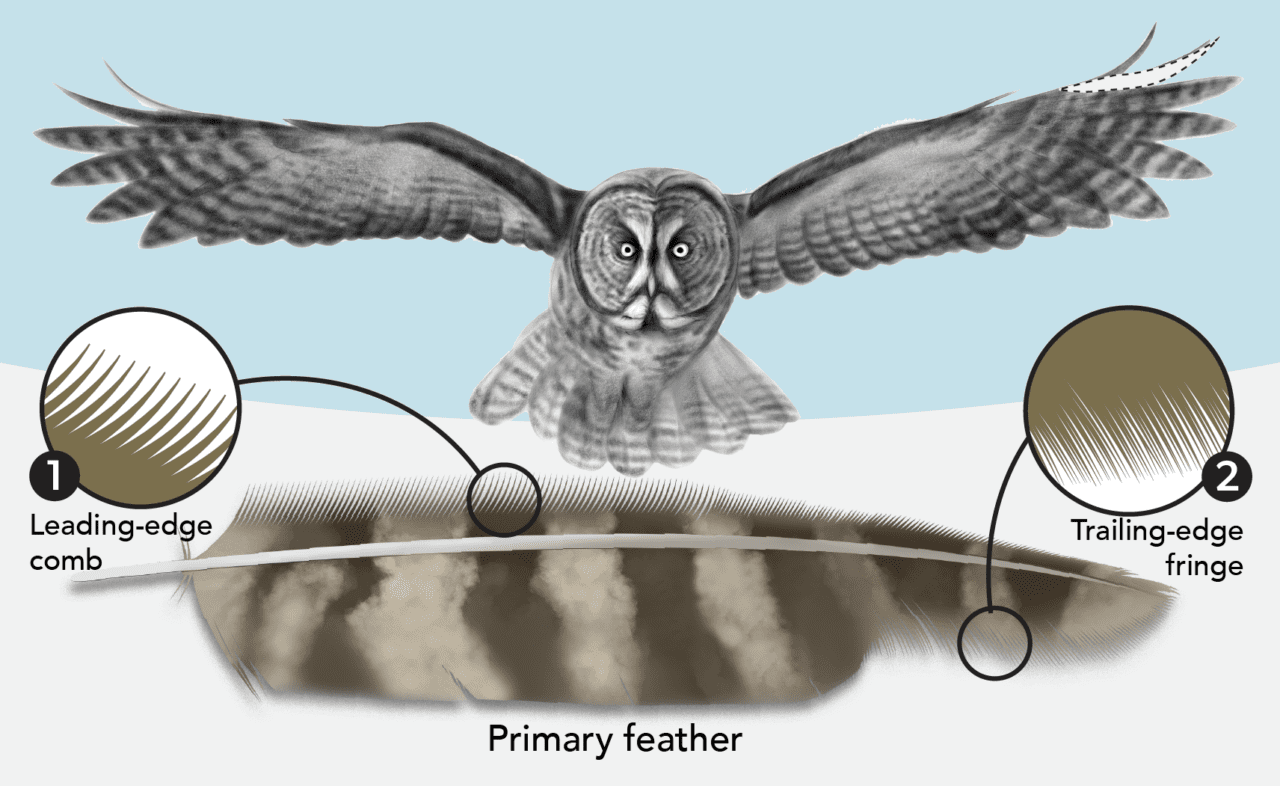
Two Unlikely Experts Team Up
“I’m a hummingbird biologist. I know this much about working with owls,” admits Chris Clark, holding up his thumb and pointer finger with a tiny gap between them.
Clark, a biology professor at the University of California, Riverside, began his career studying the mechanical sounds hummingbirds make with their feathers during display flights. About 14 years ago, he became fascinated with the opposite concept—how some birds (especially owls) minimize the noise they’d otherwise naturally produce in flight. He initially struggled to get any owl field research off the ground, but in 2021, he was contacted by a nature documentary crew making a film about animal sounds. And, the filmmakers mentioned, they were also working with a Great Gray Owl expert in Manitoba.
That expert was Jim Duncan. Duncan has been studying Great Grays for almost four decades, and after he retired as the director of Manitoba’s fish and wildlife agency in 2018, he started his own nonprofit organization, Discover Owls, focused on research, outreach, and conservation. Duncan recalls when, as a PhD student at the University of Manitoba, he conducted his first research on Great Gray Owls and spent the night in a snow hut called a quinzhee. On a bitterly cold February night at the Taiga Biological Station in eastern Manitoba, Duncan realized how snow muffled outside sounds.
“You don’t hear somebody walking up to your quinzhee until they’re right outside,” he says. “So it just became this nagging question in my mind: What sounds are these owls hearing, and how are they using them to catch food?”
The focus of his PhD dissertation was elsewhere, and he lacked the training and equipment necessary to pursue that question, so he set the question aside— until, over 30 years later, the documentary crew introduced him to an expert on bird flight and sound in California.
Soon, Clark paid for a plane ticket out of his own pocket, packed every piece of warm clothing he owned along with his acoustic analysis equipment, and headed for Manitoba. On the surface, the goals of their collaboration were simple: to test how snow might absorb and distort the sounds of voles and how that might affect Great Gray Owl hunting strategies.
“Owl Ears” vs. “Mouse Ears”
Great Grays use stealthy flight to surprise their unsuspecting prey. Owls in general are known for flying almost silently, but intriguingly, Great Grays take those traits to the extreme. Of all owl species in the world, Great Grays have the longest comblike serrations on the leading edges of their wings, and the thickest velvety coating on their flight feathers—both evolutionary adaptations for silent flight that reduce wing noise to almost nothing.
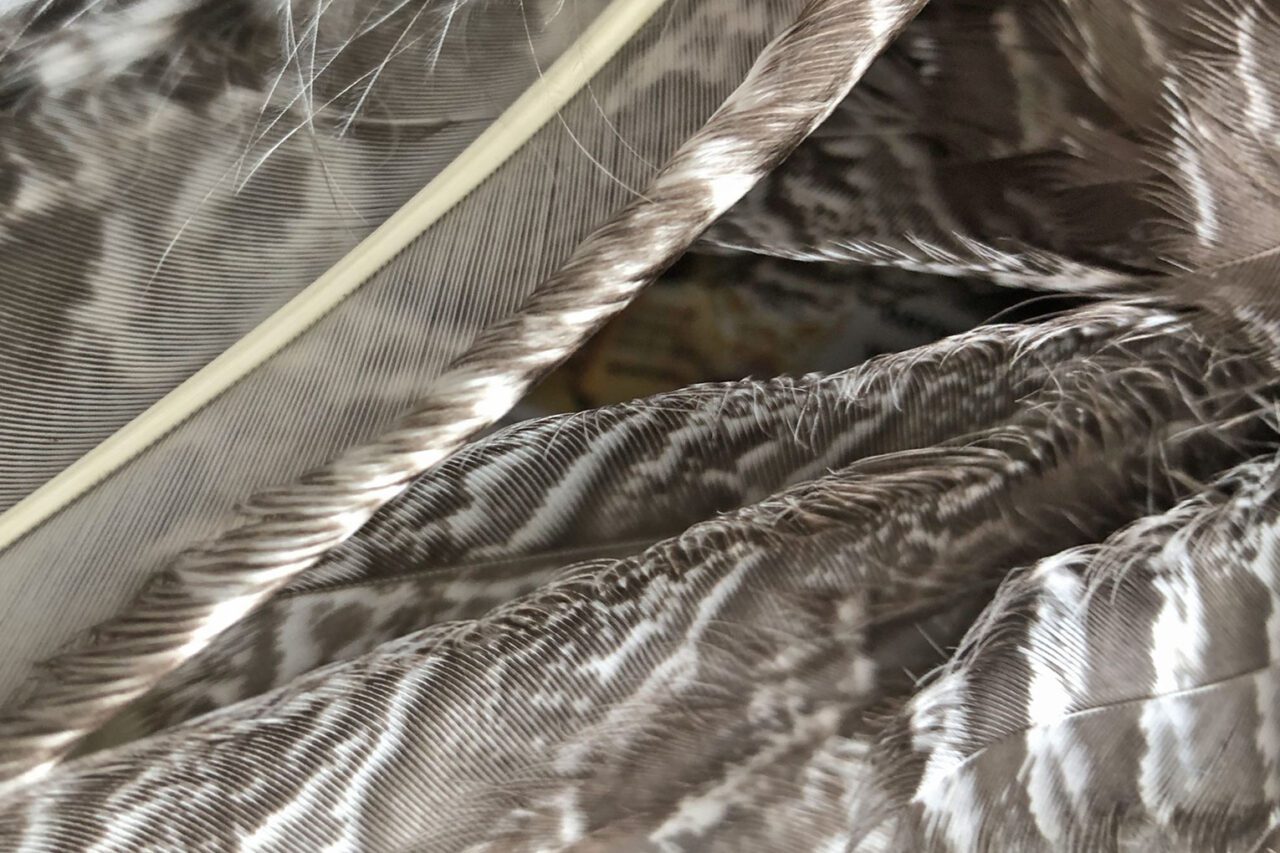
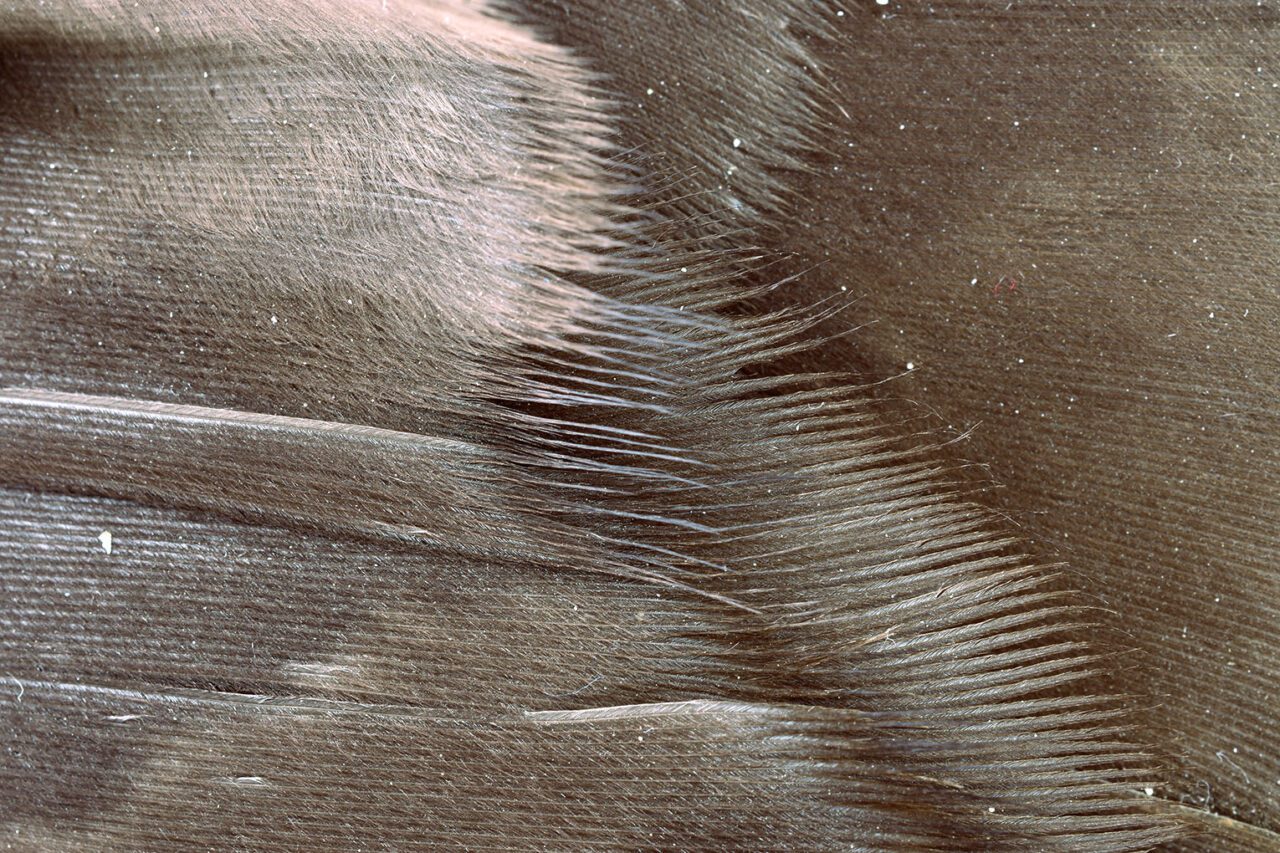
There are, says Clark, two primary hypotheses to explain why owls evolved to fly quietly: “What I call the owl-ear hypothesis and the mouse-ear hypothesis.” The owl-ear hypothesis is that owls fly quietly to avoid interfering with their own ability to detect prey by sound; the mouse-ear hypothesis is that they’re trying to avoid being detected by potential prey.
“Although these hypotheses aren’t mutually exclusive,” explains Clark, “there are some cases where they make different predictions, and the number-one case is when the environment itself blocks sound,” such as when there’s a thick layer of snow on the ground. The owl-ear hypothesis suggests that a snow-hunting owl should have especially well-developed quieting features, so that it can hear its muffled prey over the sound of its own wings. Under the mouse-ear hypothesis, however, quieting features would be less important, because the snow would provide the owl with natural stealth.
But snow does more to sound than simply dampen it. A snowpack is surprisingly complex, part ice and part air, with different densities at different depths—all affecting the transmission of sound. Low and high sounds pass through snow in different ways, and because of the different speeds at which sound travels through air and ice, snow might even refract sound, bending it so that it seems to come from a different location than its actual source.
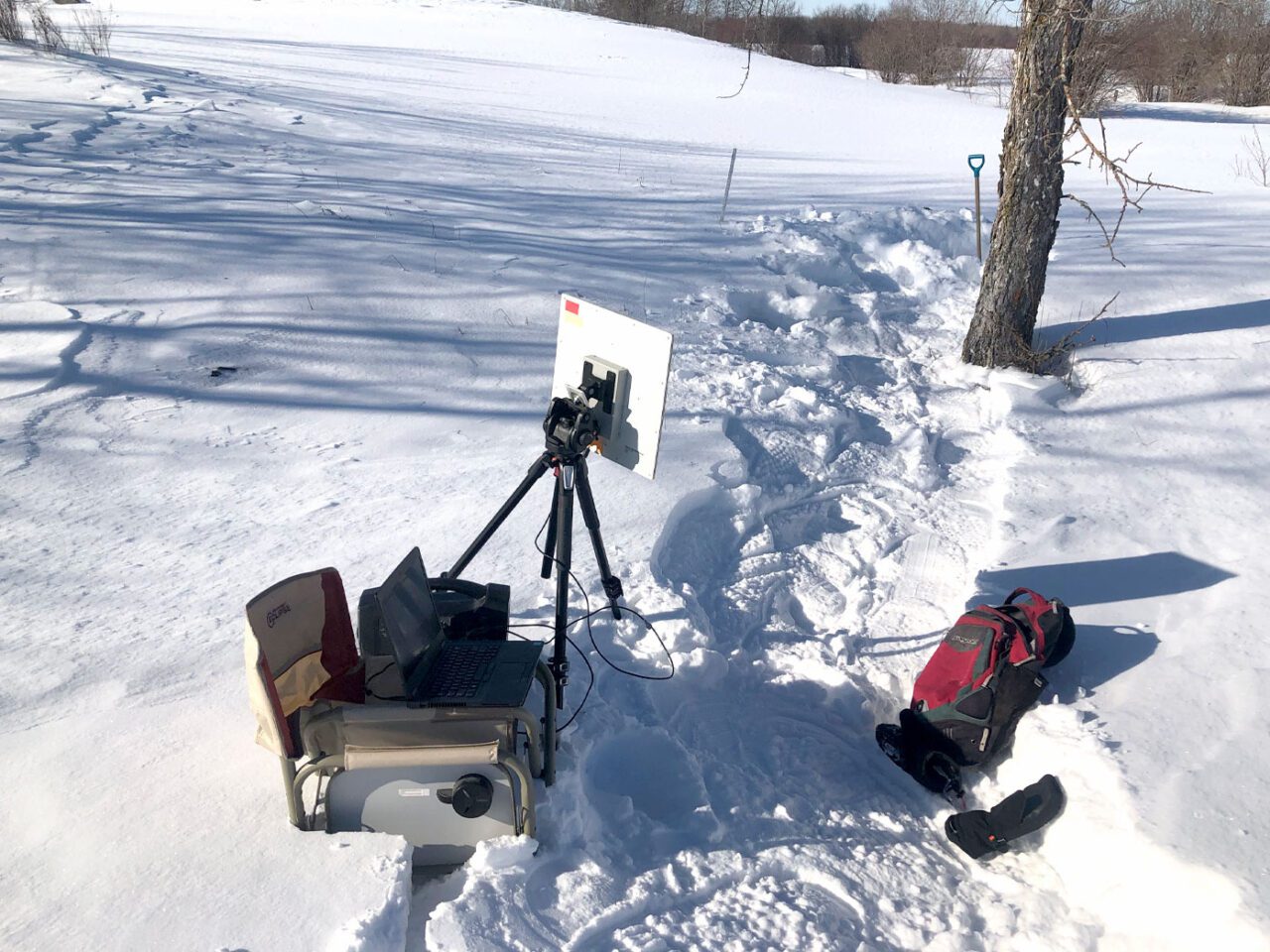
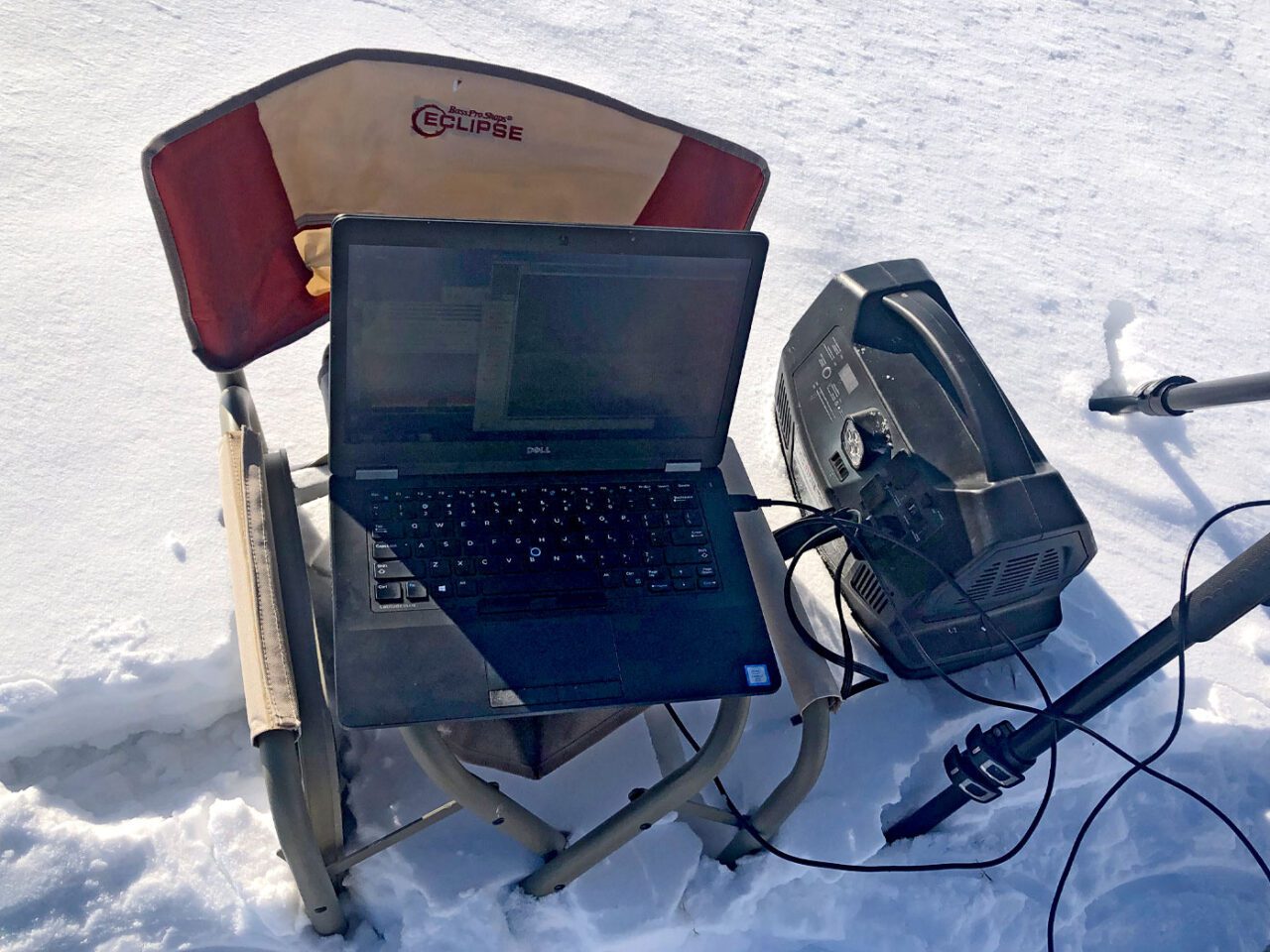
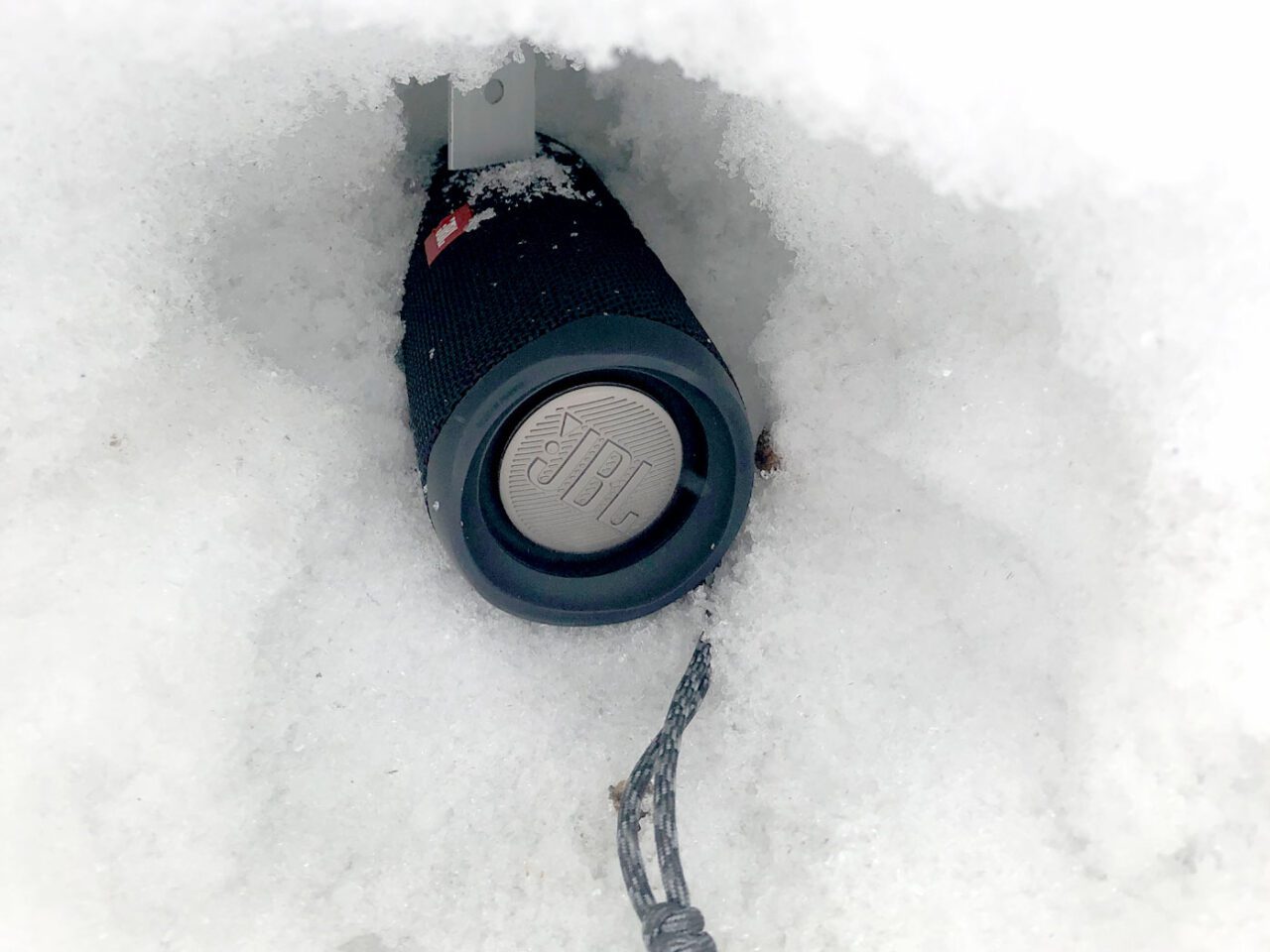
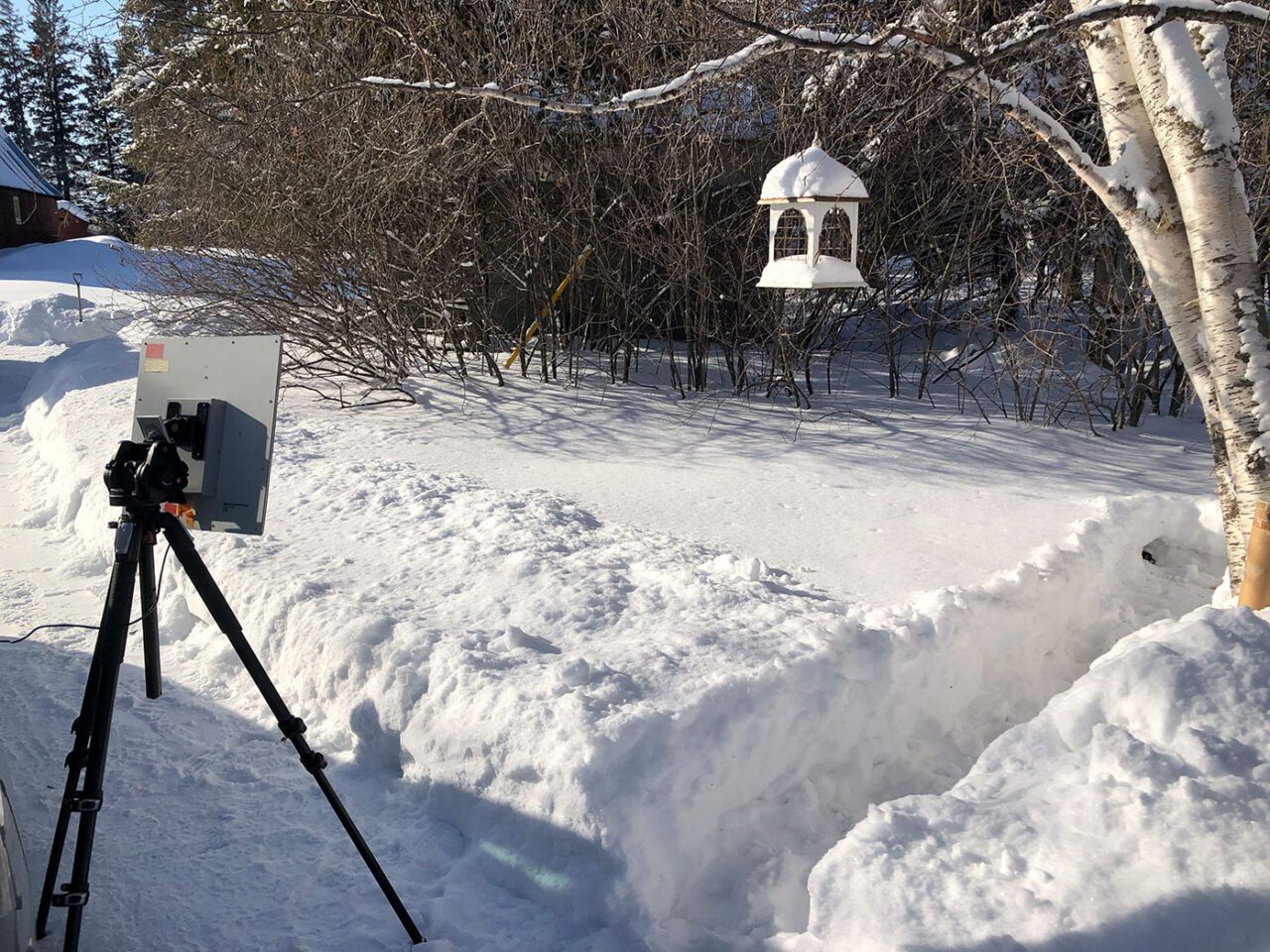
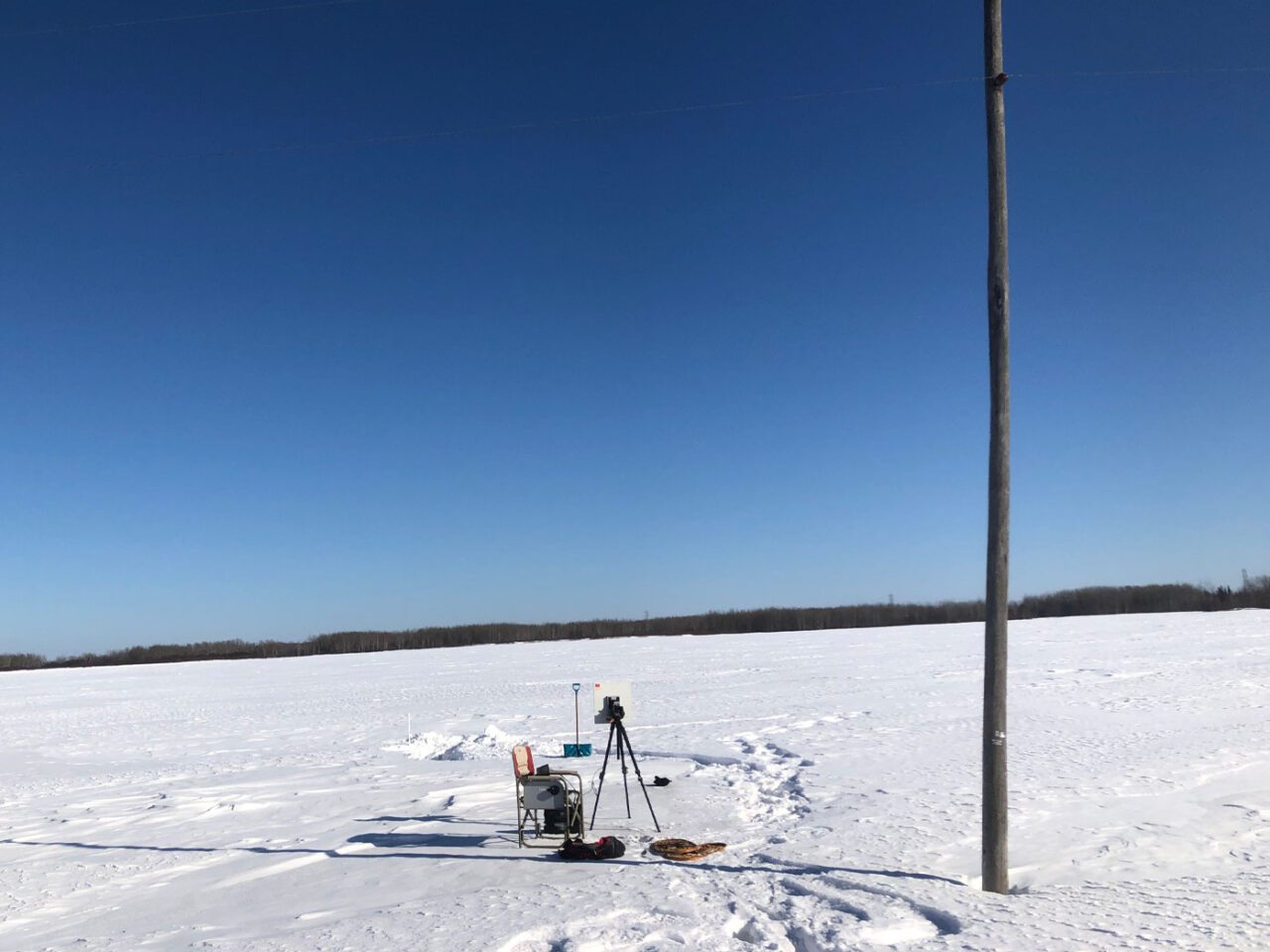
Heading to a site 60 miles northeast of Winnipeg, where Duncan knew owls hunted, he and Clark located fresh plunge holes from Great Grays pursuing voles. They dug into the snowpack and slipped a waterproof speaker underneath, playing white noise or recordings of voles digging. Then, they pointed an acoustic camera that Clark lugged from his UC–Riverside lab at the snow. An acoustic camera uses an array of 40 microphones to localize where a sound appears to be coming from, then superimposes this apparent source location on a camera image.
Working with electronic equipment in temperatures as low as –16°F presented some difficulties: “I’ve only experienced cold temperatures like that a couple of times before in my life,” says Clark, the Californian. Both the laptop he used to run the acoustic camera and the speakers playing the sounds repeatedly froze up and stopped working, limiting the number of trials they were able to do. Ultimately, Clark and Duncan were only able to complete six successful trials with the buried speaker.
But even those six trials were enough to provide some intriguing new insights into the challenges a Great Gray Owl faces when hunting in winter—and how it overcomes those challenges.
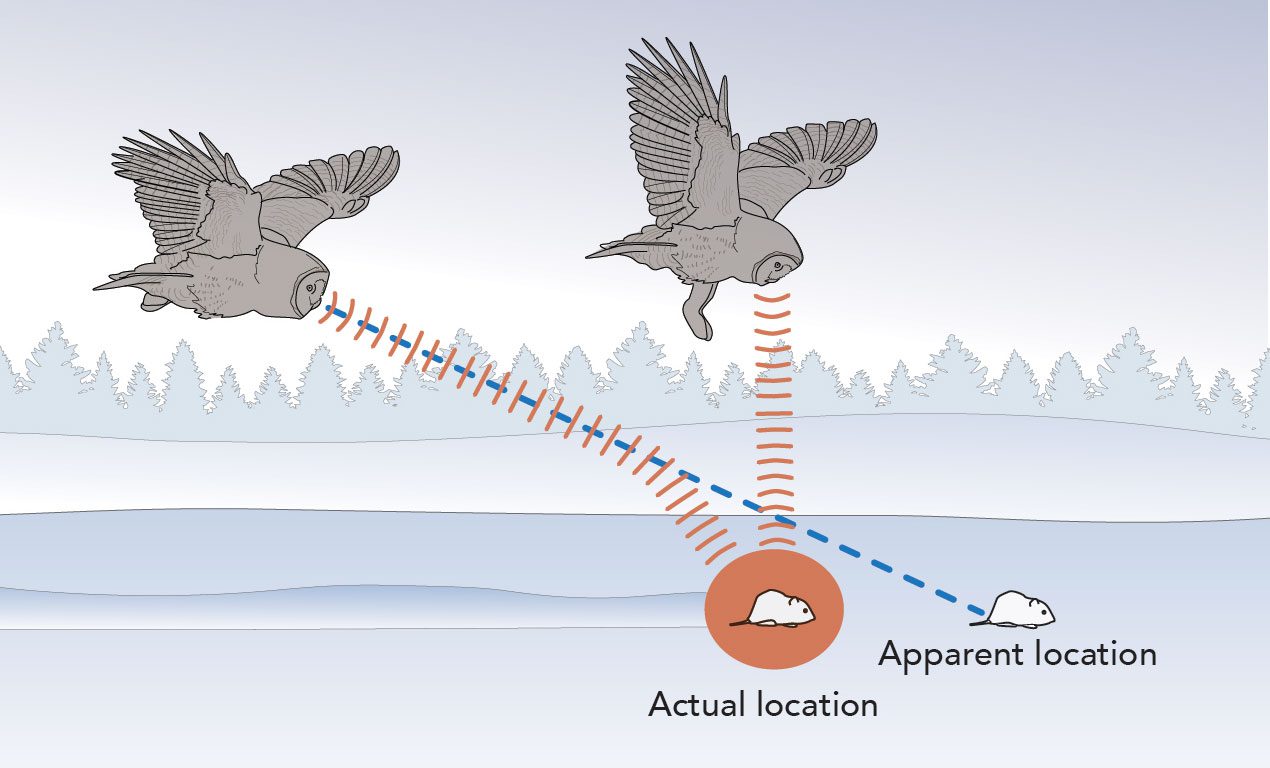
Refraction, Attenuation, and Acoustic Mirage
The results from the acoustic camera provided detailed data about how snow impacts sound in two ways: refraction and attenuation.
In this case, attenuation is the term for the way a blanket of snow muffles sounds. Clark and Duncan’s results showed that low-frequency sound is much less affected than high-frequency sound, making Great Gray Owls’ enormous facial discs—especially well-suited for gathering low-frequency sound—an ideal adaptation for hunting in deep snow. But the acoustic camera also confirmed the second, weirder way snow affects sound. Sound is indeed bent as it travels through the snowpack, shifting its apparent source by as much as five degrees relative to the actual position of the buried speaker— a phenomenon that Clark and Duncan dubbed an “acoustic mirage.”
This effect is minimized when you listen from directly above the sound’s true source, which helps explain a distinctive aspect of Great Gray Owl hunting behavior: hovering. Just before an owl plunges into the snow, it often hovers in midair for a few moments, frenetically beating its wings. This tactic likely gives an owl a chance to lock in on a vole’s actual position from the point where the acoustic mirage is minimized. Some fish-eating birds—such as ospreys, kingfishers, and gannets—prefer to strike straight down at their underwater prey for similar reasons, although they’re dealing with water bending light instead of bending sound.

Clark sees two possible ways that these snow sound effects could play into Great Gray Owl extreme adaptations for quiet flight. On the one hand, perhaps the owls’ quieting features on their wing feathers specifically suppress low-frequency sound, ensuring that sound from an owl’s own wings doesn’t interfere with its ability to hear the low-frequency digging sounds of the voles. Or, perhaps (and this is the scenario he thinks is more likely) they may be specifically suppressing sound during hovering, so as not to interfere with an owl’s ability to target its prey accurately during this crucial final moment.
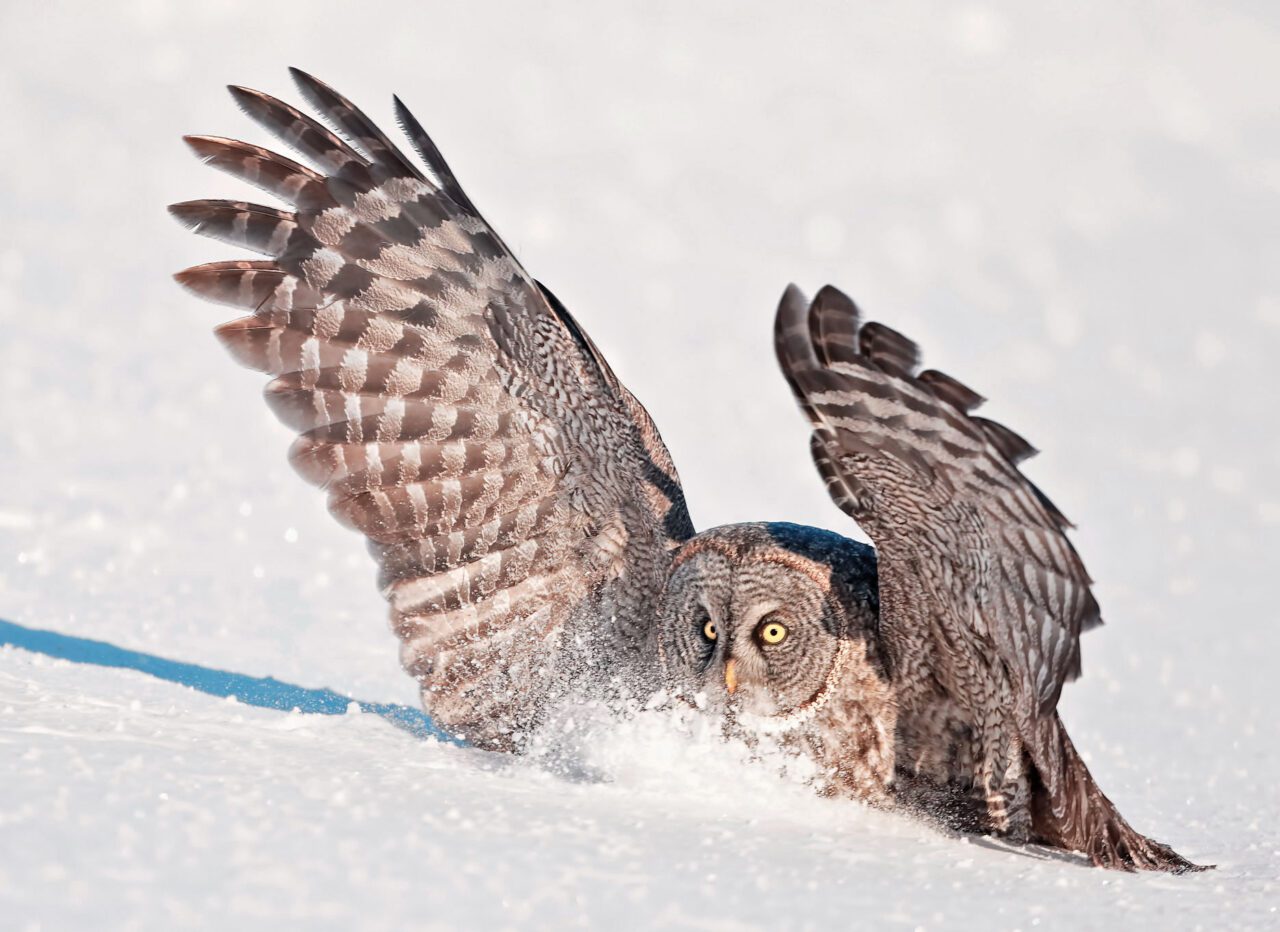
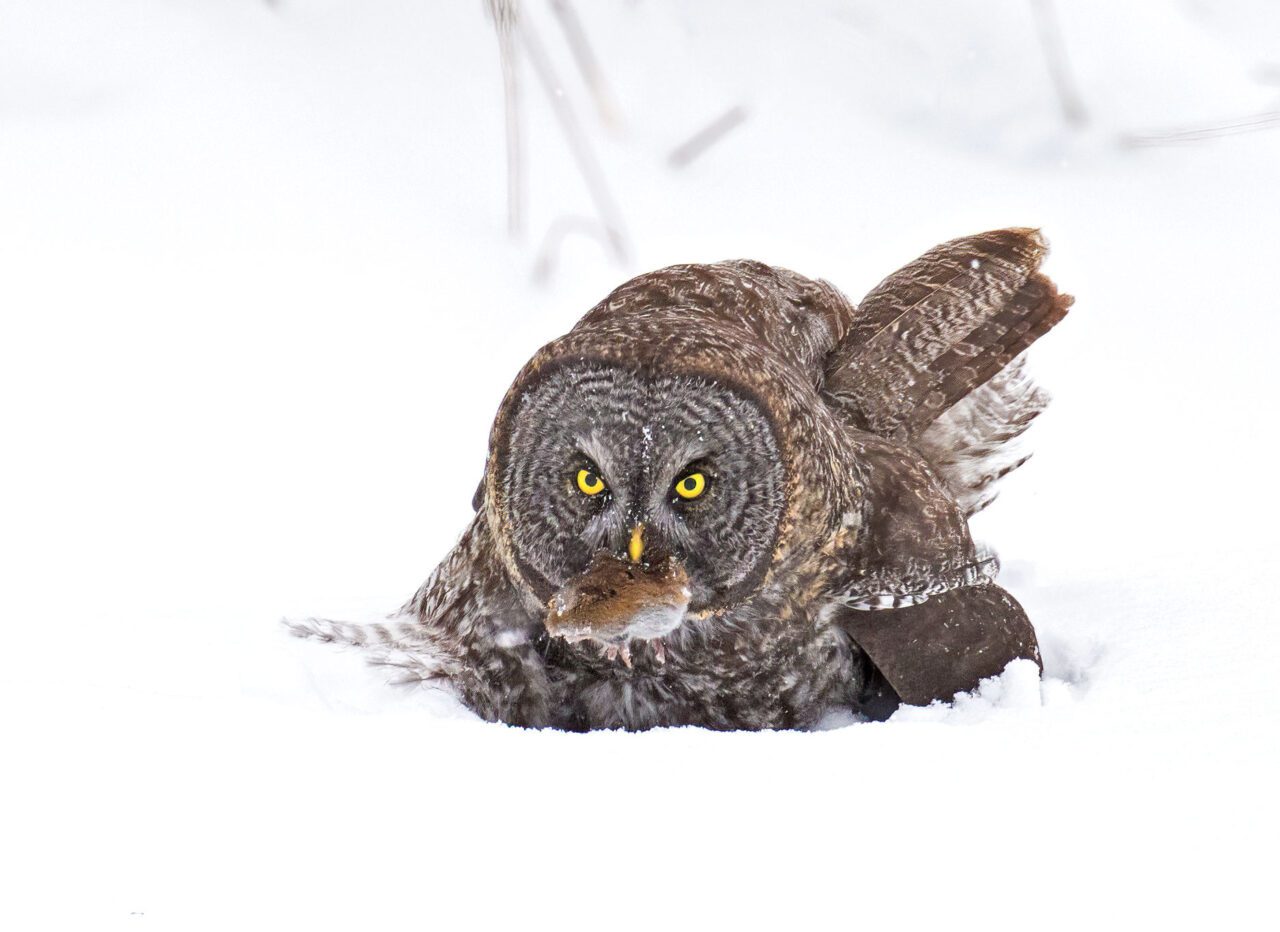
“When they’re hovering, you can see the feathers in the back of the wing lifting up. That’s an indication that part of the wing is stalling, which is when the air stops flowing smoothly over the surface of the wing and starts to form a lot of turbulence,” says Clark. Turbulence creates sound, which these wing features could have evolved to counteract. Other birds that hover while hunting, such as kestrels and harriers, have velvety wing coatings like owls.
Both of these possibilities are consistent with the owl-ear hypothesis, not the mouse-ear hypothesis. Neither explanation for the owl’s quieting adaptations is about helping the owl sneak up on voles, which can’t hear the owl coming regardless, buried as they are under a sound-attenuating blanket of snow. Instead, according to Clark and Duncan, these adaptations ensure that Great Grays can hear voles over the sound of their own wingbeats as they lock onto their unseen prey’s position.
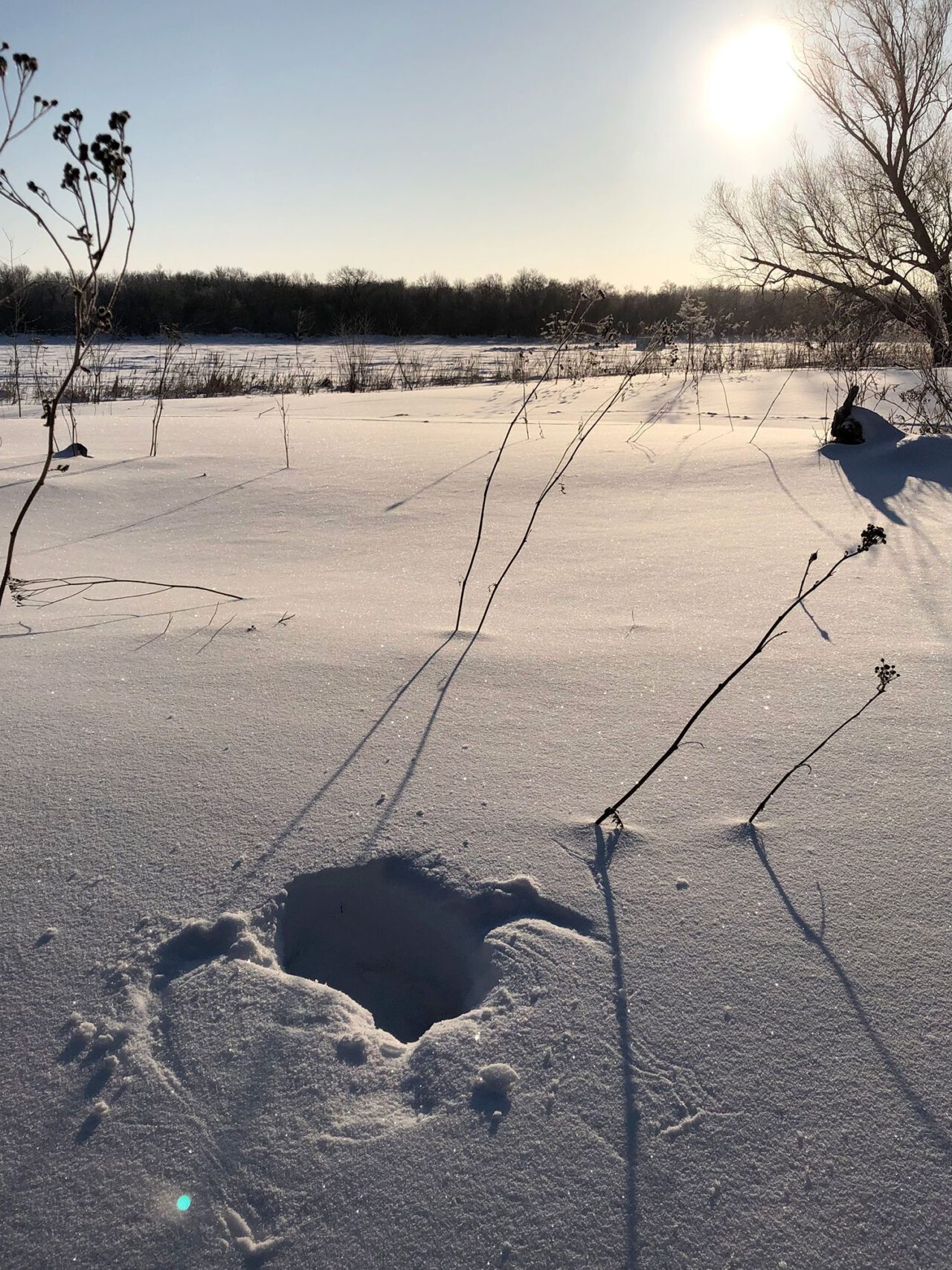
Katherine Gura, a researcher at the Teton Raptor Center in Wyoming and expert on Great Gray Owl ecology, who was not involved with this acoustics study, was “thrilled” when she read Clark and Duncan’s paper.
“This work serves as an excellent example of the fascinating questions we can answer by merging a strong knowledge of the physical properties of snow with wildlife ecology,” she says. “By testing how sound travels through the snowscape and linking those findings to Great Gray Owl foraging strategies and morphology, this study begins to unravel how this species evolved its unique winter behavior and traits.”
Gura says that Clark and Duncan’s research is a crucial first step for further studies on whether these snow-hunting acoustic adaptations of the Great Gray Owl can hold up over time, as the Earth continues to warm—and snowy winters melt away.
“This work opens the door for better understanding how changing snow regimes potentially will affect Great Gray Owls and other species that rely on subnivean [under the snow] prey,” says Gura. “Their ability to forage—and ultimately persist—in a changing world remains unknown.”
